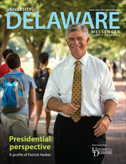Scientific leaders of tomorrow earn kudos today
Animal-inspired robots
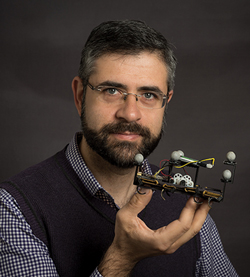
Ioannis Poulakakis is investigating ways to regulate the cyclic motion of legged robots so that they can perform tasks previously reserved for wheeled systems.
“Planning a robot’s movements to achieve real-life tasks, such as exploration or search-and-rescue missions, is a key problem in robotics,” he says.
“When it comes to legged robots, we know what controls can generate reliable locomotion, but how these controls are linked with higher-level mission objectives is not well-explored.”
When searching for inspiration, Poulakakis looked to nature.
“Animals move purposefully,” he says, in such activities as foraging for food or pursuing prey.
He is particularly interested in the way an animal’s limbs move during locomotion: a choreographed, cyclic motion that combines complex muscular planning, momentum and agility.
Renewable energy
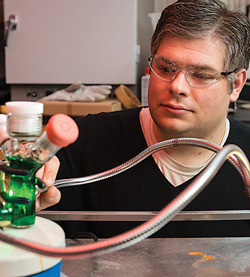
Joel Rosenthal has won widespread attention for his work seeking new catalyst platforms that use electricity generated from solar energy to convert carbon dioxide into synthetic liquid fuels for powering cars, homes and businesses.
When that type of conversion is successful, carbon dioxide, or CO2, a major greenhouse gas, can provide a feedstock for the production of synthetic petroleum, offering a potential route to the replacement of fossil fuels.
The NSF award funds research “with similar goals involving energy catalysis,” Rosenthal says, but focuses on his work with a class of molecules called porphyrinoids, which intensely absorb light.
“Porphyrin derivatives are used in nature for light-harvesting” and are found in the photosynthetic architecture of plants, Rosenthal says. With the NSF support, his research team will continue to synthesize and study molecules that can be used as catalysts.
Ocean turbulence
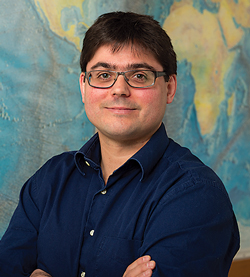
Picture pouring milk into coffee: Don’t stir, and the milk and coffee combine slowly. Swirl with a spoon, and suddenly the two mix together quickly.
“It’s the same thing with the upper ocean, but wind, waves and currents do the mixing,” Tobias Kukulka says. His research into upper ocean turbulence and particle transport has implications on the motion of pollutants, plankton, nutrients and air bubbles as they work their way through the seas.
Waves and currents churn water into a series of long, whirling masses, noticeable as bands of bubbles on the sea surface and aligned with the wind. Kukulka studies those complex processes with sophisticated mathematics and computer models, using a new method that follows the motion of particles. Then, he will apply his analysis to understanding the “great ocean garbage patch,” made up of millimeter-sized bits of plastic litter.
CO2 conversion
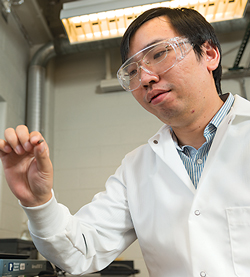
Earlier this year, Feng Jiao developed a highly selective silver catalyst capable of electrochemically converting the greenhouse gas carbon dioxide (CO2) to carbon monoxide (CO) with 92 percent efficiency.
Now, with the new NSF funding, his research group is exploring the use of bimetallic catalysts for this conversion.
“It’s not just about how we can reduce greenhouse gas emissions, but also about how we can use advanced technology to convert something with a negative impact into something positive that can improve how society generates and consumes energy,” Jiao says.
Bimetals are materials composed of two separate metals that, when joined together, interact to produce properties not achievable with a single metal.
Jiao will use computational modeling to pinpoint combinations of metals useful for electrochemically reducing CO2 to CO.
Better search engines
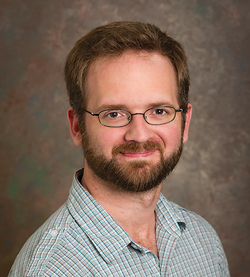
Search engines have come a long way since the first one, known as “Archie,” was launched almost 25 years ago, when people had to know the exact wording of a website’s title to find it.
However, there’s still a long way to go in brokering the perfect marriage between what a user is looking for and what a search engine finds. Ben Carterette believes the key is a better understanding of how the user and the system interact.
“We use search engines for a wide range of tasks today, from planning a vacation to finding a good day care center,” Carterette says. “Some of those tasks, like looking for a weather forecast, are relatively simple, while others, such as finding accurate medical information, are far more complex.”
He plans to simulate the process a user goes through in conducting a search in an effort to improve the system.
Understanding bacteria
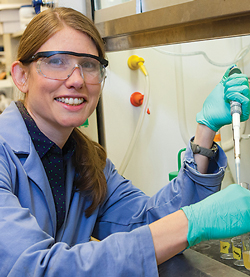
Catherine Grimes is working to better understand how human cells recognize and respond to the presence of bacteria—both normal bacteria and those that cause disease.
“Did you know that your body is composed mostly of bacteria? They beat us 10 to one,” Grimes says. “For every one human cell, we have 10 bacterial cells.”
Each of these bacterial cells has a cell wall that Grimes compares to a coat. Besides figuring out how this coat is created and what it’s made of, Grimes and her team want to know how the coat starts falling apart in the case of infectious, disease-causing bacteria. In those cases, fragments of bacterial cell wall are sloughed and then are recognized by the human immune system, which produces molecules to attack the invaders.
The research could help advance antibiotic development and also shed light on how “autoimmunity” develops.
